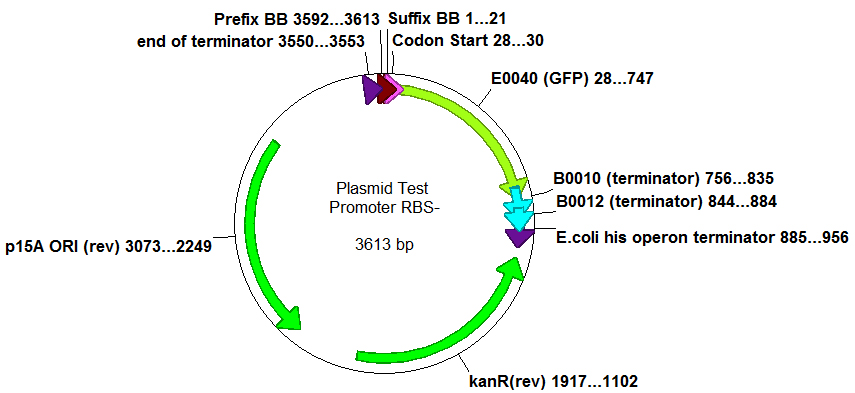Team:Paris/July 31
From 2008.igem.org
(Difference between revisions)
(→Oligonucleotides design) |
(→Oligonucleotides design) |
||
| Line 10: | Line 10: | ||
Instead of using a big biobrick containing Promoter, RBS, GFP and Terminators, the Biobrick used for the test is only the Promoter. The standard GFP tripart (E0240) is between the biobrick site, it is just between two PstI restriction sites. | Instead of using a big biobrick containing Promoter, RBS, GFP and Terminators, the Biobrick used for the test is only the Promoter. The standard GFP tripart (E0240) is between the biobrick site, it is just between two PstI restriction sites. | ||
This plasmid can be used to amplify a promoter because only the promoter is in the biobrick. | This plasmid can be used to amplify a promoter because only the promoter is in the biobrick. | ||
| - | + | <br><br><br><br><br><br><br><br> | |
| - | + | ||
==Transformation results== | ==Transformation results== | ||
Revision as of 14:58, 4 August 2008
Oligonucleotides designCreation of 3 oligonucleotides (O140, O141, O142) in order to create two particular plasmids. Those plasmids are very useful vectors to amplify promoters and to measure their forces using Standard Promoter Units.
The principle is easy to understand.
Instead of using a big biobrick containing Promoter, RBS, GFP and Terminators, the Biobrick used for the test is only the Promoter. The standard GFP tripart (E0240) is between the biobrick site, it is just between two PstI restriction sites.
This plasmid can be used to amplify a promoter because only the promoter is in the biobrick.
Transformation results
|
 "
"


